

 Freemasonry in Israel
Freemasonry in Israel


 Freemasonry in Israel
Freemasonry in Israel
 Freemasonry in Israel > Articles > Research > Historic Freemasonry in the Middle East
Freemasonry in Israel > Articles > Research > Historic Freemasonry in the Middle East
Historic Freemasonry in the Middle East
Isaac Bar-Moshe
PM, Lapid #67 and Haari #26, Jerusalem, Israel
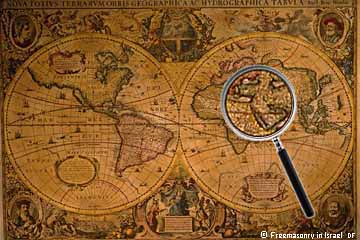
Researchers into the history of Freemasonry in the Middle East usually skip a beat when they find a book about it that had appeared in the past. Books written in the past about Freemasonry have all disappeared. The history, which should have been written and documented, is now forgotten and lost, if not purposefully obliterated. The surprise is manifold as the book in question is one of the oldest written, and is not one vilifying Freemasonry, old and modern, which one can still find on the shelves of many bookshops.
Such a surprise was in store for me, when I first set eyes on what is certainly one of tile oldest, if not the oldest, published in the Arabic language about Freemasonry. In the early eighties, I was serving in Egypt in the diplomatic service of Israel when in an old collection of books, offered for sale, I found the book. It was a wonderful surprise. The title of the hard-cover book is moderate: "General History of Masonry" and the sub-title "From its early days till today." The author is Georgy Zeidan, a very famous historian-novelist, whose fictional work is still widely read and cherished, because his novels are considered to contain the most genuine description of the Ottoman Empire during its last years.
The book was printed, and presumably published, by Al-Mahroosa Press in Cairo (Egypt) in 1889. The back of the title page carries the emblem of the double-headed eagle with the crown on the two heads, clutching a sword with a ribbon on which one can read the famous inscription "Deus Meumque Jus."
The introduction, in itself a beautiful work, of art and depth of thought, speaking about tire campaigns waged against Freemasons, most often exploiting the secrecy adhered to by Brethren of the Craft. The author defends the nobility and honesty of the Brethren, but says that even if we declare our truth, we shall still remain a target for the vilifiers. "The Craft was not built upon principles which should remain covered up till the end of time," he maintains and predicts: "A time will come when there will be no barriers whatsoever between the craft and the people."
The author stated, that as far as the information about Freemasonry in the Middle East was concerned, he drew his knowledge from well-known Masons in Egypt, Lebanon, and Palestine, with special mention of the books and publications of Egypt's Grand Lodge. He spoke about those who allowed him to mention them by name, as well as about Freemasonry in general. He listed the names of famous British and French authors of the day. Bro. Zeidan is authenticated thus, as a well-learned and very knowledgeable Mason of the last century and early twentieth century.
Bro. Zeidan goes on to state the reasons for the secrecy maintained then, before the end the 19th century, and practiced among similar Orders in East, and West: it was meant only to protect the Order from dictators and ill-wishers.
Bro. Zeidan presents a compact study covering a series of Orders in ancient Egypt, India, Syria, Greece, China and Scandinavia, which ended in the advent of Christianity. All these Orders took from one another the system of grades and well-guarded secrecy, and later crystallized in the Christian clergy system. Knowledge was kept in the, hands of the chosen few, and admission to the small circle was subject to difficult examinations, usually after long periods of waiting. The conclusion was that the ideal way for guarding and then carefully disseminating wisdom and occult sciences was found to be the secret societies.
The question may be asked, rightfully, if there is any need to review a book, the contents of which is by now, common knowledge among Freemasons in the West, and indeed among many Jay readers. To answer this question, before embarking on the task of reviewing and analyzing the book, would of necessity, requires a survey of the "Here" and "Now" which accompanied the birth of this unique Masonic book. The fourth quarter of the 19th century saw a certain flourishing of Freemasonry in the Arab world, due in the greatest part to expanding influence of European countries in the domains of the Ottoman Empire. Freemasonry was not introduced in the Arab world, as a cover for the process of substituting the Ottoman rule by European colonizers, but rather as a bright side dominating the minds of not a small number of European officials working in the Arab world in the service of their countries. Freemasonry brought some of the best aspects of European civilization to the Arab world. The truth is that Freemasonry spread then like fire, in the ranks of intellectuals. Many of the higher values taking root in many bright minds in the Arab world, was in fact the offshoot of Masonic learning, and these minds were among the first to call for equality, freedom, and sanctity of human life.
The records are now almost extinct. Later events went into a direction that necessitated covering up the real trends. We know now, even though none can produce written evidence, that not a few members of the clandestine Young Arab Society were, at one time or another, active Masons. We know for certain that a good number of the Arab writers and poets who immigrated at the end of the 19th century to the United States, France, and Latin America have actually joined Masonic Lodges there. The world famous Lebanese poet and writer, Jibran Khalil Jibran, was a Mason. Some of these well-known poets, thinkers and intellectuals returned in the end to their homelands, to face other realities under new national regimes, vying fervently with each other, and eyeing suspiciously those who speak in a unified voice about noble human values, transcending schisms and rivalries.
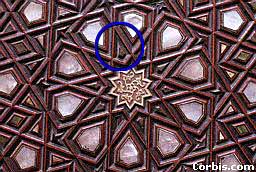
The situation cannot be summarized easily. But the outlines speak well for it; the Ottoman Empire was coming to its end. National regimes were at their infancy. Democratic trends were raising their heads and making their voice heard everywhere, bill the dangers surrounding them were great, both inside each of these countries and around all of them together, as countries who speak the same language, and follow, mostly, the same religion. The fact remains hidden or unacknowledged till today: Freemasonry spoke the same language and lifted high the same banners everywhere in the Arab world and in the Middle East. I have in my possession a number of Ritual Books in all three grades of Freemasonry, printed in Egypt and Jordan in the twenties and thirties of this century. The books are in the finest Arabic of the day and there are very few and negligible differences in the wording. The unity of the work is enough to stir doubts in the hearts of the new rulers of the new countries.
The Ottoman Empire was receding. The Arab countries were born one after the other. New rivalries were coming about. Conquerors and conquered were still shouting at each other, sometimes exchanging verbal abuses. New rulers were at odds with each other. New trends were fighting for the upper hand. Freemasonry alone stood, towering, above rivalries and for the brotherhood of man. Boundaries had no effect on it. Rivalries did not permeate its intellectual sphere. Ritual books printed in Egypt, Jordan, Lebanon, Syria, and Palestine were unified in style as I mentioned, and almost the same in wording. Small wonder that rivals in the nascent counties felt, one and all, that the Voice of Freemasonry constituted a threat to them all. Disunited as they were, they became united in their fear of Freemasonry.
The period, which saw the appearance of this important book: "General History of Masonry," was in fact the period of the approaching change. Freemasonry flourished in many countries, still under the rule of the Ottomans, and it was authentically reported that many of the national leaders of the emerging independent states and most certainly many of the intellectuals, poets and writers were among the Brethren of the Craft. It may well be that the greatest contribution of the West to the nascent countries of the Middle East, was no other than the unifying voice of Freemasonry.
It is also certain that sectarian elements, whether nationalistic or religious, saw in Freemasonry a tangibly strong and dangerous rival. Not that Freemasonry sought rivals or encouraged rivalry, but the mere fact that Freemasonry called for the Brotherhood of all men under the Fatherhood of One G-d, posed a threat to those who sought domination, and wanted to quell free thought and freedom of conscience. Oddly enough, Freemasonry unified its enemies as well.
Having stated all this, it is not a venture into the unknown, to review at least some of the chapters of "General History of Masonry". Bro. Zeidan outlined old and new histories of Masonry, dividing each of them into two periods. The old history of Masonry started around 715 BCE and went on until 1000 CE. The second period started around 1000 CE going on till the year 1717. As to the history of modern or Speculative Masonry, Bro. Zeidan stated that this covered two periods: the first between the years 1717 and 1783, while the second started in 1783 and was still going on then.
Most of these pieces of Masonic knowledge have been studied and restudied, put into focus and doubted or confirmed time and again. Masonic sciences are still researched in the light of every single discovery. Bro. Zeidan shed light on the facts accumulated up to the time he wrote his book. And he summarized his wealth of knowledge all too well.
Thus, reviewing the first period of ancient, primitive Masonry, the author stresses the mixture of stone-building and high morality with architecture as an exact science. Great buildings were erected and the belief in G-d was the sole though obscure guide. The Romans chose in 715 BCE an emperor to regulate their lives. Numa Pompilius was the great legislator, and builder, who organized the first Guilds, and established building schools to organize and regularize the erection of religious temples. The Guilds set freely their own inner rules and orders. They chose their masters and their wardens together with their treasurers and physicians. The Guilds kept the secrets of their arts very close to their hearts. They were asked by the state to execute and oversee every building project, and they carried their duties to the best results. The tri-gradal system prevailed, Lodge Masters were elected for a period of five years. Their work began after a religious ceremony, and, to prevent any conflict because of their adherence to different gods, they centered their prayers on an agreed "Great Architect of the Universe." Promotion ceremonies were very much like the Egyptian promotion rituals.
Bro. Zeidan states that the Builders Guilds were distinguished on account of their high moral codes. They were also known to use secret signs and passwords. The builders grew in stature with the ancient Romans, and then declined with them. They remained after that in abeyance till the advent of Christianity, which gave them a great push forward. The author insists that the builders were always referred to as "Building Brotherhoods." He mentions also that in the year 5 CE there was a group of Jewish builders in Rome, protected by the government of the day and allowed to join in temple-building since the days of Julius Caesar. Some of them joined the Brotherhood in order to ease the process of building their own Temples, thus introducing some Jewish secrets into the Brotherhood.
The arrival of the stone masons in England was reviewed in great detail, and so were the highs and lows of the masons of the Roman Empire.
Here is a paragraph translated in full:
"The Masons who immigrated to Syria and Palestine during the years of oppression (in Europe), stayed there till the days of (the Emperor) Constantine. He was known for his support of Christianity, and when he ruled, he employed these builders in church building in these countries. The early churches were built in Jerusalem and Bethlehem. He then ordered the building of the Holy Sepulcher and several other churches in Antioch. The Masons Brotherhood were widespread in the East, especially in Syria and Palestine, reaching as far as the Arab peninsula, much beyond the domain of Roman rule. In Constantinople itself there were in the year 340 CE twenty-three churches, all built by the Masons Brotherhood." (p. 55.)
It would seem relevant at this point, to stress that the importance of this book lies first and foremost, not in the general narrative of the history of Freemasonry as it was known in the early period of the 19th century and was contested in some of its details later on. The authentic material brought by the author derives from very reliable Arab historical sources.
I venture to say here that this material is, as far as I know, almost totally unknown to Masonic researchers in the West. In all my studies and readings I did not encounter the name of any Orientalist in the ranks of Masonic researchers. Thus I find it very relevant to bring in full what Bro. Zeidan introduced in his research, from famous Arab historians. Thus we see the following on pp. 60-61:
"The great philosopher Ibn-Khaldoon (1330-1406 CE) described the building of the Mosque in Medina during the rule of Omer Ibn Abd-el-Aziz (681-720 CE). Thus: ... Then he wrote to him (the reference is to Omer Ibn Abd-el-Aziz) on the Islamic year 8, suggesting him to survey the burial lots of the great Moslem Women inside the Mosque, in order to buy the surrounding lots so as to acquire 200 square yards in front of the Alter. And whoever refuses to give up the land he possesses, you will pay him fairly and then demolish the place as was done by the (Caliphs) Omer and Othman. Those who possessed the lands gave up their possessions for the price they received. When that was over Al-Walid sent to the King of Rome (in Constantinople) to say that it is his wish to build the Mosque. The King of Rome sent him a hundred thousand golden coins and a hundred Masons with forty foods of mosaics, through Omer Ibn Abd-el-Aziz. He also ordered to add builders from Damascus. Then Omer started to build."
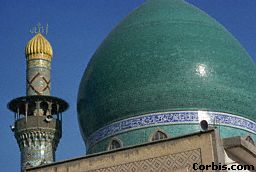
And so it seems that the author's most important achievement was his quotations from Arab historians regarding the Masons. As about the building of Baghdad, he quotes from the Arab historian Ibn El-Atheer (1149-1210 CE) the following:
"The Caliph Al-Mansoor wrote to Damascus and Al-Jabal, Kufa, Wasit, and Basra regarding the masons and artisans. He ordered to choose people known for their virtue, fairness, and religious knowledge. Then he ordered to choose those whom he needed from among the virtuous and those with great knowledge of architecture."
Bro. Zeidan went on to quote from the same Arab historian:
"The Master among the Masons would get at the end of a day's work, a silver karat and the apprentice two tenths of the silver karat."
From these quotations, Bro. Zeidan concluded, that the builders of Baghdad were Brother Masons, whose presence was known all over the East. And in the chapter he devoted to Masonry in England, he produced the first translation into Arabic of the York Manuscript.
Another chapter detailed the shift to Speculative Masonry. Practically more than two thirds of the book is devoted to Speculative Masonry and the history of the Craft from 1717 till 1889.
The advance of Freemasonry and its eventual transformation to an all-embracing Order, which recruits the good and the virtuous among all men, is told in flowing terms all through the book. This advance is recorded in each and every country in Europe and then in the East.
The author, being a Syrian, starts his review of Freemasonry in the East, understandably, in Syria. His review is the first and the only one I found in Arabic Masonic sources. It is worthy of note that Bro. Zeidan reviews in his study the work of the enemies of Freemasonry as well. So that when we finish the book we can see why this work was followed by little Masonic literature or none, for a long time, or to be exact, even to the present days, very near the end of the millennium.
The enemies of Freemasonry seem to have been born at the same time with the advent of Speculative Masonry in the Middle East.
The author takes up the story of Freemasonry in his mother country, Syria, as from the beginnings of Christian history and also from the first days of Islam. The Masons' work, nameless and selfless, can still be seen in scores of churches, mosques, citadels, and massive ancient walls surrounding the old cities. There is evidence that due to the beauty and perfection of their work, many Syrian Masons were invited to Persia and other countries to construct religious temples, citadels, or walls. It was from Syria, that the Caliph Al-Mansoor called the Masons to help construct the city of Baghdad. Bro. Zeidan states that, under Islam, the Masons were not persecuted or oppressed as under the Romans. There are very scant records to help the researcher, but it is obvious that Masonry reached Syria at the beginning of the Christian era. Speculative Masonry, though, was very modern. The first Lodge in Beirut was established in 1862 under the auspices of the Scottish Grand Lodge. The Lodge number was 415. The language was French, but among the Masters who presided was the Consul General of Great Britain, and the Lodge had a membership, which encompassed many Syrian notables and many foreigners. The Lodge was dormant in 1868 but renewed its activities and Charter in 1888.
In 1868, another Lodge was established under the auspices of the French Grand Orient. This time, the language of the Lodge was Arabic. Many of the country's notables, literary figures, and government officials were among the Brethren. It was about this time that the enemies and opponents of Freemasonry started to attack the Craft maliciously, on the grounds that all its work and benevolent activities were suspicious, and made behind a curtain of secrecy. The Jesuits, who were among the most vehement opponents, issued a religious newspaper whose name was Al-Basheer (The Herald), for the specific purpose of vilifying Freemasonry. The newspaper made it its duty also to attack all creeds and beliefs with the exception of Catholicism. Those who accepted help from Masonic funds were shamed or cowed into refusal. The result came soon. The word "Mason" started to sound as an insult or anathema.
In spite of all this, several other Lodges were established in Damascus, Homs, Aleppo, Inab, Alexandria, and Antioch. Most of these Lodges were under the auspices of the Grand Lodge of Italy, and many of them closed up because of the growing animosity towards Freemasonry. Bro. Zeidan recalls that the first Lodge in Damascus was established as a result of the efforts of the late Prince Abdul-Kader El-Jaza'iri, the Algerian patriot who found refuge in the East after leading a revolt against the French in his country. The Lodge was under the auspices of the Grand Lodge of Italy.
The first Lodge in Palestine was established in Jerusalem in May 1873, under the auspices of the Canadian Grand Lodge. The name was The Royal Solomon Lodge No. 293. The author does not state the full story which was this: A group of Canadian railways engineers were in the Holy Land to lay the first railway line in the country between the coast (Jaffa) and Jerusalem. Many of those engineers were Masons. Records found in Israel suggest that the Lodge became dormant upon the departure of the Canadian engineers. But Bro. Zeidan states that the work of the Lodge continued (at least) for another four years under Worshipful Master William As'ad Khayyat, who took it upon himself to raise the torch high, as long as he was able to do so.
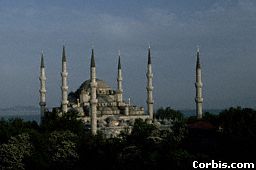
Old practical Masonry was known in Turkey since the time of the Emperor Constantine, the builder of Constantinople. Masons and stone-builders enjoyed many privileges and their work was regulated by law. Those same builders were asked by Caliphs to build mosques in Jerusalem and in Baghdad. The Grand Lodge of Turkey was formed by Prince Halim Pasha. Three Lodges were known to exist in Istanbul, all chartered by the Grand Lodge of England. Three others were established under charters from France, two chartered by the Italian Grand Lodge and one by Ireland. Apart from Istanbul, the author lists six Lodges in Izmir chartered by the Grand Lodge of England and two by the Italian Grand Lodge.
It is important to mention here that Freemasonry flourishes to this day in Turkey and enjoys high esteem there.
Understandably enough, Freemasonry in Egypt receives the lion's share. The author is all too aware that many of the roots of the Craft are to be found in ancient Egypt. Thus he relates the story of the development of old Egyptian societies, their customs and their semblance to modern Masonic societies. All nations, ancient and modern, learnt from Egypt and from the three thousands years of continuous civilization in Egypt. The great Temples by the side of the Nile, which withstood several millennia, are witness to the faith of those who erected them. Egyptian clergymen guarded their secrets fervently, and the great architects of ancient Egypt are rarely known to anyone till these days. Some of them were viewed later on as gods in their country.
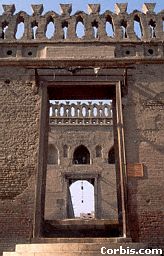
When modern Speculative Freemasonry arrived from the West to Egypt, its arrival coincided with the uncovering of the great temples of Egypt. Masonry in ancient Egypt was part and parcel of ancient Egyptian religion. At the period of the Caliphs, Egypt continued to build, under Islam, relying on the efforts of the Masons. The great Mosque of Ibn-Toulon in Cairo, built by Ahmed Ibn-Toulon (884 CE), is one of the greatest architectural achievements of Islamic Egypt. Its grandeur is no less than that of the ancient Egyptian temples. The author quotes the Arab historian Al-Maqrizi (1364-1441 CE) about the way the mosque was built. The quotation reads:
"When Ahmed Ibn-Toulon wanted to build the mosque, he estimated that three hundred massive columns will be needed for the building. He was told (by his advisors), you shall not find these columns unless you go to outlying churches and to decaying ones to carry the columns off. He rejected the idea and would not adopt a program like this. His mind was torn by the thought, and he contacted the Christian whom he had earlier sent to prison. The Christian wrote to him to say: I shall build it for you as you would like it, without any columns, except the two columns, which will indicate the direction of Mecca. So he ordered him out of prison ... and the man said I shall draw the plan so that the Emir will see the drawing and how it stands without the columns except for the two indicating the direction of Mecca. The Emir ordered the skins for the drawing and the Christian made the drawing, which was greatly appreciated by the Prince. He ordered his release from prison to be absolute, and gave him the cost of the building to the amount of one hundred thousand dinars. ... And the Christian started to work on the construction ..."
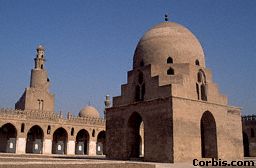
Bro. Zeidan asks the readers to contemplate the story. Prince Ibn-Toulon would not find anywhere in Egypt, a man who could construct the mosque for him and in accordance with his wishes except one man who was earlier put in prison by order of the Prince. Egypt, says Bro. Zeidan, was at the time a civilized Islamic country, very much advanced in sciences and industries, and yet, Masonry's secrets were known to few that would not share them with anyone outside their circle. It was well known at the time that the Freemasons were widespread in the East, and it is obvious that the man chosen by the Prince, was one of them. At this time, we do not know for certain that a well-organized Order of Freemasons was then in existence. It is quite probable that the Order did exist, and that its history was lost to the following generations, like so many other Orders in the annals of Egypt.
Bro. Zeidan went on to stress the fact that Speculative Masonry came to Egypt, following the French occupation in 1798. General Kleber, together with other Masonic officers, and with the blessing of Napoleon Bonaparte, agreed to establish a Lodge by the name of "Isis" which became dormant after the failure of Napoleon's military campaign. But in 1845, another Lodge was started in Alexandria by Italian Brethren who acquired a charter from Scotland's Grand Lodge. The son of the Great Mohammed Ali, Prince Halim, together with Prince Abdul-Kader El-Jaza'iri were at the helm in another very effective and influential Lodge in Cairo. It was estimated that in Cairo's Lodges, there were over one thousand Brethren. Lodges were established in the cities of Suez, Port Said, Ismailia, and many other cities in Egypt. The author related the detailed history of Masonic activities in Egypt until, in 1876, Egyptian Lodges waved away all unacknowledged allegiances and adhered totally to the Scottish allegiance, adopting the tri-gradal system, prevalent already all over the world. Following that, the Egyptian Grand Lodge was acknowledged by many Grand Lodges, first of which was the United Grand Lodge of England. In 15/9/1877, the Grand Lodge of Egypt declared Cairo as its official seat and meeting place.
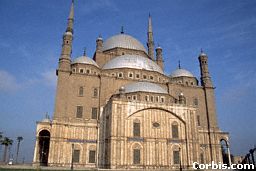
The book, which is in all probability the only available document about Freemasonry in the Middle East, ends by listing the Lodges working under the auspices of the Egyptian Grand Lodge, together with their numbers. The first is Lodge Mohammed Ali No. 1. Another list names the English Lodges, active in many Egyptian cities. One must bear in mind that the date in which the book was published is 1889. The book contains 256 pages, and it is not to be found in any list of works by Bro. Zeidan, containing as it is, scores of works in history and historical fiction.
I mentioned an old collection of books in which I found "General History of Masonry." I may add here that the book must have had a soft cover. But following the custom of the last century, it was bound artfully by a craftsman who put on the side (to be seen on the bookshelf) the name of the book and below the name of the owner of the book, who was evidently a Brother by the name of Abdul-Kader A'kef.
To end, I would refer all those who would like to acquaint themselves with the last chapters in the History of Freemasonry in Egypt to an important and detailed piece of research which appeared in A.Q.C. Vol. 81 of 1968, and Vol. 82 of 1969, under the title "Freemasonry in Egypt" by Bro. F.D. Stevenson Drave. The Lodges were closed and their activities were forbidden in 1962. By a decree of the government of Colonel Nasser, Masonry was outlawed in Egypt. And as was customary at the time, the Grand Lodge Halls were forced open and photographers were allowed to take pictures of everything that caught their eyes. Long and heavily photographed articles were published in the Egyptian press of the day. Bro. F.D. Stevenson Drave wrote, obviously in a sad mood:
"Freemason's Hall in Cairo and the land on which it stood, together with practically all its contents, including the regalia and records of the District, the private Lodges and Members, now remain in the hands of the Egyptian Government, and there seems little prospect of their ever being released, or compensation for their loss being received." (A.Q.C. 81, 1968, p. 217.)
The situation remains unchanged till the present time. I may also refer all those interested in this dismal story, to a short but very moving article which appeared in A.Q.C. 107 of 1994 under the title "A Hitherto Unknown Hebrew-Speaking Lodge in Egypt" by Bro. Leon Zeldis.
The many prosperous Lodges in the Kingdom of Jordan came to an abrupt and sad end some three years ago. One fine day, the Fundamentalist members of the Jordanian Parliament, who were normally a minority, found themselves almost alone in the Parliament building, legislated and promulgated a law banning Freemasonry in the Jordanian Hashemite Kingdom. No attempt was made afterwards to correct the injustice.
The book "General History of Masonry" stands like a lone obelisk in the now general aridity in the field of Freemasonry in the Middle East. But the story is far from ended. Some happy chapters await to be written, and these might come soon.
The "Iraqi File," an Arabic monthly published in Surbiton, Surrey, England, in its May 2000 issue (No. 101), published a chapter of a book by Dr. Ala'a-el-Din El-Dhaher, a Professor of Mathematics now living in Holland. The book carries the title "The Destruction of Lies." Here is a paragraph from this chapter:
"Immediately after the revolution (1959 coup) a list containing the names of Iraqi Freemasons was received from Lebanon. Abd-el-Salam Aref (deputy of coup leader Kassim) requested permission to line them up against the wall and shoot them all. But Abd-el-Karim Kassim refused, because there was no law under the Royal Regime banning Freemasonry. Kassim said to his deputy, "You say they are spies. Let us monitor their activities. Besides, all of them are Medical Doctors, Engineers, and Professors, whom the country needs. If you imprison them or kill them, I shall have to bring foreign experts. Who will assure me that they will not spy on the country?" Kassim resisted pressures from many sides to publicize their names or to put them under pressure, saying, "How could I know that the Lebanese sources have sent a correct list of names? May be the list is correct. But even if I find out that one hundred of these names are really Freemasons and one name only was included in the list by mistake, I shall be ready to forgive all of them in order not to harm the bearer of this name."
The June 2000 issue of the quarterly, "The Square," published by Ian Allan Publishing in England, carries an important article, entitled "History of the Grand Lodge in Iran" by M. Hearn and T. Abtin. Here is a paragraph from the article:
"The only EC (English Constitution) Lodge to be warranted in Iran was Lodge St. George Abadan #6058, in March 1946; it was sponsored by Lodge Mesopotamia #3820. The EC lodge and other Iraqi lodges were under the control of the Grand Inspector of Iraq."
It would seem at this point, that there is much hitherto unknown or unpublished information, mostly in the memory of Brethren in the know who lived in those days, which is of great historical value, waiting to be uncovered.
Copyright © 1997- Freemasonry in Israel. All rights reserved. • Valid XHTML, CSS, WAI, Unicode.
Reproduction, distribution, or publication of any part of this web site, in any form or by any means, constitute infringement of copyright laws.
This web site is NOT the official site, statement, or opinion of any Grand Lodge, Lodge, or individual. All contributions are voluntary and represent only good intention and effort.